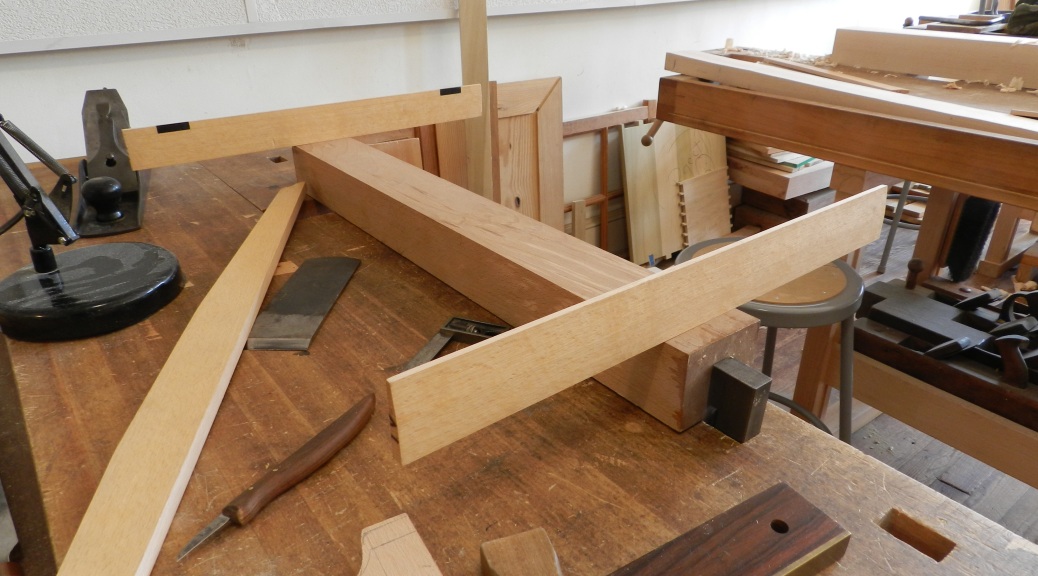A good pair of winding lath or winding sticks is sometimes hard to find — I suspect not many survived the burn pile. The good news is that a new set is easily made in an few minutes at the bench.

Why would I want a pair of ‘Winding Sticks’? What do they do?
- This pair of matching straight-edges are a fast and invaluable tool that allows you to quickly see if a board is flat.
- By placing them at each end of a board, sighting down across the near stick and looking at the far one, you can more easily see any twisting or warping in the board. The sticks help accentuate any non-planer surfaces.
- By moving one stick and sighting the board at a few locations along its length, you will quickly see how the board flows.
- Using a single stick you can also check for any cupping or warping as you would with any other straightedge.
- Once you identify parts of the board that need to be addressed, you can quickly plane them and re-evaluate the board using these sticks. (After a bit of practice, process goes quite fast)

From Otto Salomon’s ‘Teacher’s Handbook of Sloyd’ above you can read a nice description for how to use winding laths efficiently. The pair of wooden Sloyd winding laths shown above nest with each other via a set of fitted wooden pins and have a nice relief one the edge of the short sides so you can easily get a finger hold in there and separate the sticks when you want to use them. Otto also calls out an interesting alternative you can use in a pinch — by turning two try-planes on their side you can use them as an impromptu set of winding sticks and sight across them.

Tips on making your own winding sticks:
- Use quarter-sawn hardwood like hard maple or beech
- Consider adding a contrasting inlay or strip to make it easier to sight across the sticks
- I like to use sticks that are 1/2″ thick, about 2″ wide and about 18-24″ long
- Sticks that can nest with each other or otherwise stay together are more likely to survive
- Taper each stick on one side so that it’s clear what edge is the top (it will not stand on its own on the edge you plane down to 1/8″)
- If your sticks ever get out of true they are easily squared up again with a plane
The next time you are out in the shop, make a quick set of winding sticks and see how much it can improve your board flattening efficiency.
-Bill
P.S. If you don’t have the the time or scrap to make your own set from wood, and don’t have 2 jack or try planes handy, you need to have a stern talking to, but there are commercially available winding sticks available from Lee Valley and others. I admit that I do have a pair of the Lee Valley aluminum winding sticks which I bought when I first got started in hand tool woodworking. They are well machined and the design hits all the major tips called out above — with the exception of being made of wood of course.

Much like the shop made winding sticks, these aluminum sticks work well and need virtually no maintenance.

P.P.S — This is an extended version of a post I put together for my friends at Popular Woodworking on the contributor’s blog which can be found here.


The most beautiful set of Winding Sticks I have ever seen or used belonged to the Brit who taught me French Scribe timber layout now many years ago, they were / are Ebony with Ivory & Brass inlay.
Though I rarely use my Sticks in the woodshop, I use them almost daily in the timbershop, to set out snapline datums to unwind timber in both Square Rule and Plumb Line Scribe layout.
Always good to see how others do what they do.
Good stuff.
— Will
Hi Will,
Thank you for the note. 🙂
Take care,
-Bill